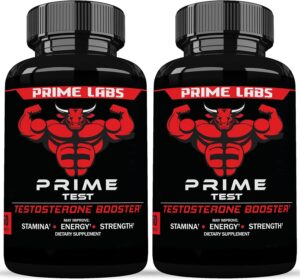
Harris Lavreysen, a prominent figure in the world of track cycling, has garnered international acclaim for his exceptional prowess on the velodrome. Born on September 11, 1997, in the Netherlands, Lavreysen has quickly ascended to the top of the cycling world, capturing multiple world championships and Olympic medals. His impressive track record includes gold medals in both the team sprint and individual sprint events at the Tokyo 2020 Olympics, showcasing his formidable speed, strength, and tactical intelligence.
Lavreysen’s rise to prominence is a testament to his rigorous training regimen and disciplined approach to nutrition. His success is not merely the result of natural talent but also the product of a meticulously designed workout plan and a well-structured diet, both of which are critical in maintaining peak physical condition and achieving Olympic-level performance.
Workout Regimen
Harris Lavreysen’s training is a blend of high-intensity interval training (HIIT), strength conditioning, and specific cycling drills. His workouts are carefully tailored to enhance his explosive power, speed, and endurance—key attributes for a track cyclist.
- Cycling-Specific Training
- Sprint Intervals: A core component of Lavreysen’s training is sprint intervals. These sessions involve short bursts of maximum effort sprints, usually lasting 10-15 seconds, followed by equal or slightly longer periods of rest. This high-intensity work is crucial for developing the explosive power required in sprinting events.
- Team Sprint Drills: Given the nature of team sprint events, Lavreysen engages in drills that focus on teamwork and synchronization. These sessions often include practicing starts, transitions, and maintaining high speeds over short distances.
- Endurance Rides: Although track cycling emphasizes short bursts of speed, endurance is also vital. Lavreysen includes longer, steady-state rides in his routine to build aerobic capacity. These rides can last 1-2 hours and are performed at a moderate intensity.
- Strength and Conditioning
- Gym Workouts: Lavreysen’s strength training is integral to his overall conditioning. His gym routine typically includes exercises such as squats, deadlifts, and leg presses to build lower body strength, which is crucial for sprinting power. Upper body exercises, including bench presses and rows, are also included to ensure a balanced physique.
- Plyometrics: To enhance explosive power, Lavreysen incorporates plyometric exercises such as box jumps and power cleans. These exercises help improve the rate of force development, which is essential for a sprinter’s acceleration and top speed.
- Core Training: A strong core is fundamental for maintaining stability and power transfer on the bike. Lavreysen’s core workouts include planks, Russian twists, and leg raises to enhance core strength and endurance.
- Flexibility and Recovery
- Stretching: Regular stretching routines help maintain flexibility and prevent injuries. Lavreysen incorporates dynamic stretches before workouts and static stretches afterward to improve range of motion and reduce muscle stiffness.
- Recovery Sessions: Recovery is a crucial aspect of Lavreysen’s training. He employs techniques such as foam rolling, massage therapy, and cold baths to aid muscle recovery and alleviate soreness. Active recovery sessions, such as light cycling or swimming, are also part of his regimen.
Diet Plan
Harris Lavreysen’s diet is meticulously designed to fuel his intense training sessions, aid in recovery, and maintain optimal body composition. His nutrition plan emphasizes a balance of macronutrients—carbohydrates, proteins, and fats—along with vitamins and minerals essential for performance and health.
- Macronutrient Distribution
- Carbohydrates: Carbohydrates are a primary energy source for high-intensity exercise. Lavreysen’s diet includes a significant portion of carbohydrates from sources such as whole grains, fruits, vegetables, and legumes. Carbohydrate intake is particularly emphasized around training sessions to ensure glycogen stores are replenished.
- Proteins: Protein is crucial for muscle repair and growth. Lavreysen consumes lean protein sources such as chicken, fish, eggs, and dairy products. Post-workout, he often opts for protein shakes or smoothies to provide quick protein and carbohydrate replenishment.
- Fats: Healthy fats are included in Lavreysen’s diet for overall health and energy. Sources of healthy fats include avocados, nuts, seeds, and olive oil. These fats also play a role in hormone production and absorption of fat-soluble vitamins.
- Meal Timing and Composition
- Pre-Workout: Before intense training sessions, Lavreysen consumes a meal or snack rich in carbohydrates and moderate in protein. Options might include a banana with peanut butter, oatmeal with berries, or a whole-grain sandwich with lean protein.
- Post-Workout: Recovery meals are designed to replenish glycogen stores and repair muscle tissue. A typical post-workout meal might include a combination of protein and carbohydrates, such as grilled chicken with quinoa and vegetables, or a smoothie with protein powder, fruit, and spinach.
- Hydration: Adequate hydration is essential for optimal performance and recovery. Lavreysen ensures he drinks plenty of water throughout the day and uses electrolyte drinks during prolonged or intense training sessions to replace lost minerals.
- Micronutrients and Supplements
- Vitamins and Minerals: A varied diet rich in fruits and vegetables helps Lavreysen meet his micronutrient needs. Key vitamins and minerals such as Vitamin D, calcium, and iron are important for bone health, immune function, and overall performance.
- Supplements: While a well-rounded diet provides most nutrients, Lavreysen may use supplements to address specific needs. Common supplements for athletes include Vitamin D, Omega-3 fatty acids, and protein powders. It’s important for him to consult with a nutritionist to tailor supplement use to his individual requirements.
Harris Lavreysen’s Olympic success is a product of his dedicated and disciplined approach to training and nutrition. His workout plan is a comprehensive regimen designed to enhance explosive power, endurance, and overall performance on the track. Complementing his training is a carefully structured diet that supports his high-intensity workouts, aids recovery, and maintains optimal body composition. Lavreysen’s meticulous attention to both his physical conditioning and nutritional needs underscores the importance of a holistic approach in achieving and sustaining elite athletic performance. As he continues to push the boundaries of track cycling, his regimen remains a model of excellence for aspiring athletes and seasoned professionals alike.








